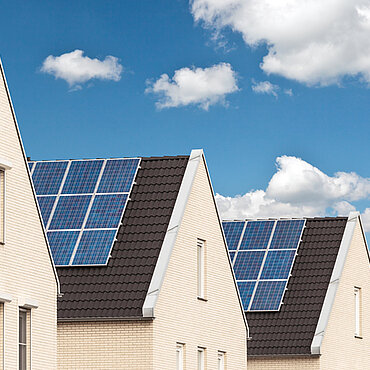ESG ushering in changes for properties
It’s the buzzword on everyone’s lips: ESG (environmental, social, governance). This article gives an overview of current and upcoming changes in legislation relating to properties.
Current changes in legislation
1. Smart meters / landlord’s duties to inform
Already since December 2021, landlords are required to install remotely readable metering devices. These are devices that can be read without the need to access the individual usage units. Nevertheless, no immediate conversion is required. If only a single metering device is integrated in an entire system is replaced, it may (initially) also be replaced by one of the same type. However, by 31 December 2026 at the latest it will be mandatory to retrofit or replace existing metering units unless this “is not technically possible due to special circumstances, would entail undue expense, or cause some other special hardship”.
Since 1 January 2022, landlords having installed remotely readable metering devices in their properties are required to inform their tenants each month about
their consumption or the related costs during the past month,
a comparison with the previous month, and
a comparison with an average user.
For each breach of the landlord’s duty to provide tenants with such information, the heating charges are to be reduced by 3%.
For information on the manner in which information is to be provided, the Federal Environmental Agency has made available a guideline: www.umweltbundesamt.de/publikationen/verstaendliche-monatliche-heizinformation-als
2. Charging and cable infrastructure for electromobility
Efforts to promote electromobility in Germany have now also reached the building sector with the Act on the Development of a Building-integrated Charging and Cable Infrastructure for Electromobility [Gesetz zum Aufbau einer gebäudeintegrierten Lade- und Leitungsinfrastruktur für die Elektromobilität, “GEIG”). Under the GEIG the conditions and scope for creating charging points and charging infrastructure are defined, with a distinction being made between commercial and residential properties (first level) and between existing properties and new builds (second level). Depending on the combination, implementing measures (as a result of new builds or major renovations) are already required. We therefore recommend gaining an overview of the respective obligations and analysing how charging points together with other infrastructure are to be built and operated. In this regard, the GEIG offers what it refers to as the “neighbourhood approach”. This means entering into appropriate agreements to ensure that charging infrastructure is provided also for several properties.
Since some of the GEIG provisions are not very clearly worded, a certain level of uncertainty in implementing its requirements is to be expected in some cases.
Impending changes in legislation
1. Energy Performance of Buildings Directive
In December 2021, the EU Commission submitted a proposal for the recast of the Directive on the Energy Efficiency of Buildings.
Among other things, the proposal includes provisions on zero-emission buildings as the new building standard from 2030 on, an EU-wide standardisation of energy performance certificates, new energy performance standards for buildings, and related renovation requirements. Specifically, this means that the 15% of worst performing buildings in each case will have to be renovated – non-residential buildings by 2027, residential buildings by 2033. The development of the Directive should be followed so that it can already be anticipated and taken into account in planning as far as possible.
2. CO2 price
On 25 May 2022, the German Federal Cabinet approved a draft bill that would see landlords participate in the CO2 price and thus in the costs of heating. The act is to enter into force from 1 January 2023. For residential properties, the CO2 price is to be split between the tenant and landlord depending on the energy efficiency of the residential building. This is calculated based on the annual CO2 emission in kilograms per square metre. Depending on the emissions, the CO2 price will be split between the landlord and the tenant in ten phases. Under this provision, 90% of the CO2 price is to be covered by the landlord if the building’s energy efficiency is particularly poor, and 100% by the tenant if the building’s efficiency is particularly good. In the case of self-provision by the tenant, the landlord must reimburse the costs on a pro rata basis.
For commercial buildings, however, the fifty-fifty principle is to apply. That means that the tenant and the landlord each cover 50% of the costs arising from the CO2 price, irrespective of how energy efficient the property is. However the German government is looking to introduce a phased model by the end of 2025. Also in the case of commercial properties, a departure from the fifty-fifty principle to the detriment of tenants is to be excluded.

Subscribe to our GvW Newsletter here - and we will keep you informed about the latest legal developments!





